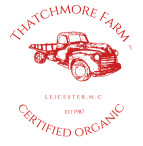Ask Tom: Landscaping Fabric Revisited
by Tom Elmore | May 8, 2014 | Organic Grower’s School
https://organicgrowersschool.org/ask-tom-landscaping-fabric-revisited/
Hello Farmer Tom,
I like your “Organic Growers School” website. I am in the process of redoing landscaping and a garden on the property we just purchased and was wanting a safe landscaping fabric – NO Chemicals!!!. I read your blog about what you have had success with and was wondering what the company and product name of the fabric and staples were. Also, where did you purchase them?
I especially liked the “hole burning” method as I am puling up fabric that was cut and full of weeds!
Nice idea!!! Please let me know about the materials. Thanks and God Bless!
Lori Scears (Pittsburgh, PA) PS – I used to live in Cary, NC – Miss that beautiful state 🙂
Dear Lori,
Landscape fabric as I use the term refers to a woven geotextile in contrast to the felt-like material often called weed barrier. In my experience the woven material is much more durable and less prone to weeds germinating on top of the fabric and rooting in the soil below. The most common use for woven landscape fabric is as greenhouse floors or to suppress weeds in container nurseries.
 Landscape fabric is available in several widths. We normally buy 12’X300’ rolls from greenhouse suppliers. It comes in various thicknesses or weights. I recommend the heaviest that your supplier offers. We ended up with a variety of weights over 25 years and the heavier weight is less likely to rip around the sod stables when we pull up the fabric between crops. Except for those minor tears which we can usually avoid with careful removal, I expect our fabrics to last for several more decades. Several greenhouse supply companies run trucks to our area including Griffin Greenhouse Supply which I believe serves Pennsylvania also. For those in the Asheville area, check with Reems Creek Nursery in Weaverville or Rays Supply in Mills River. I believe they both sell landscape fabric by the foot, in case you need less than a full roll.
Landscape fabric is available in several widths. We normally buy 12’X300’ rolls from greenhouse suppliers. It comes in various thicknesses or weights. I recommend the heaviest that your supplier offers. We ended up with a variety of weights over 25 years and the heavier weight is less likely to rip around the sod stables when we pull up the fabric between crops. Except for those minor tears which we can usually avoid with careful removal, I expect our fabrics to last for several more decades. Several greenhouse supply companies run trucks to our area including Griffin Greenhouse Supply which I believe serves Pennsylvania also. For those in the Asheville area, check with Reems Creek Nursery in Weaverville or Rays Supply in Mills River. I believe they both sell landscape fabric by the foot, in case you need less than a full roll.
We secure our fabric with 1”x5” sod stables which are available at Southern States and other suppliers of sod or erosion control products. Check with your local feed and seed store if Southern States does not serve Pennsylvania. They usually last about five years.
In response to your comment about no chemicals, you will probably notice a shiny finish on new fabric which I assume is some sort of lubricant left from the manufacturing process. It seems to degrade over several months or you can speed up that process by cleaning the fabric with a bristle brush and detergent or soap. Building supply stores have inexpensive brushes used to apply roofing tar which probably will work.
For hole spacing we use two patterns – one in a diamond pattern with one hole per square foot. At each four foot mark across the 12 foot fabric we designate as an aisle. Next to the aisles we place the holes off center toward the beds to allow a little more space for foot traffic in the aisle. The other pattern we use is two rows of holes per four foot bed on 18 inch centers. This second pattern is for cabbage and warm season crops like tomatoes and peppers.
You mentioned hole burning which I covered in this post.

In response to that article Jonathan Rutledge, a grower at Earthaven wrote that he had success in burning holes with a torch which seemed to be less complicated than our heated pipe fitting method. We use fabric created with both methods and Jonathan certainly has a point about the complexity of heating and reheating pipe fittings. If you decide to use a gas plumbers torch, be cautious about the length of the burn on each hole. I recall a story from a fellow grower who smelled smoke and turned around to find the fabric and the lawn in flames. I also prefer the smooth hole left by hot pipe fittings which is easier on the hands of transplanters. Either approach will work in my experience.
Also from that post are the main reasons we like using fabric in vegetable production.
- weed suppression,
- more even moisture across the bed,
- warmer soil in cold weather,
- cooler soil in hot weather,
- most importantly — cleaner produce.
Once a crop grows bigger than the transplant hole, rain and overhead irrigation no longer splash soil on the crop. Clean crops result in quicker harvests and less produce waste.
In another OGS post on fabric contains an explanation of why my wife Karen calls landscape fabric our “marriage saver.” Click on the link below for details.
https://organicgrowersschool.org/1456/ask-tom-using-landscape-fabric/
Thanks for your question.
— Tom

